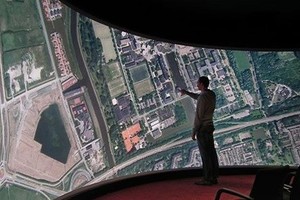
It wasn't that too long ago that business and life, in general, moved at the pace of a personal phone call or letter delivered on paper. Technology continues to revolutionize the way we work and communicate. The April 17 CMC forum featured a diverse panel of top level IT executives from private, public and education sectors who will discuss the next big innovation in the world of information technology (IT). Moderating the panel discussion is John Hrusovsky, partner with Quick Solutions.
They explained that technology can be divided into two parts -- strategic and tactical. On the strategic side, the "cloud" is the becoming more popular for both personal and corporate users for applications and infrastructure. Hrusovsky also identified the move toward single source channels of communication where voice, data, email, instant message, etc. are integrated and not dwelling in separate places. Technology is moving to blend these together.
Protecting data from would-be hackers is an increasingly sophisticated issue. Data security is incorporated into everything a business does when it comes to technology. Another type of strategic technology is business intelligence. Businesses collect gobs (technical term?) of information but how that data is used and analyzed becomes a critical tool in improving the performance of that business or organization.
On the tactical side of technology is enterprise collaboration. These are the technological tools that make it easier to work together and disseminate information about what your organization does. The multiple platforms of social media are one example. Cramer noted another example, SharePoint, a software application which give users the ability to work on documents together in real time -- not making changes, saving the file and sending another email.
Mobile devices are here to stay, at home and in the office. Watch for your laptop, desktop, phone and tablet to sync together making each device simpler to use simultaneously.
Finally, Hrusovsy and Cramer explained the concept of agile. Whereas in the recent past, project managers would plan, design, test and then deploy a new website, computer system etc., when all those steps were complete, current models for execution have become more flexible or agile. Yes, advance planning are testing are done, but the final product may be introduced in smaller parts offering the planners the option to make changes and redirect the overall plan as it evolves For example, the basics of a website may be implemented and additional elements are built and integrated as ready. This offers the chance to react to constant feedback from customers and clients and can be utilized for both small and large projects.
